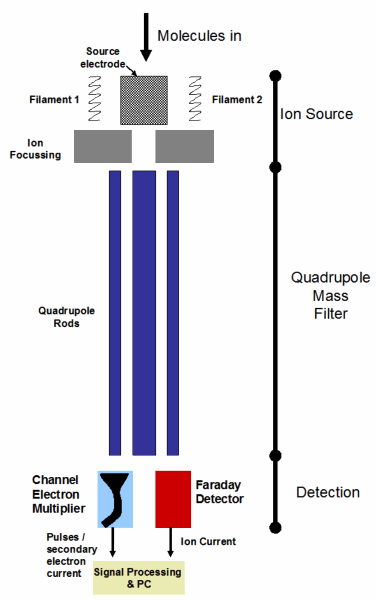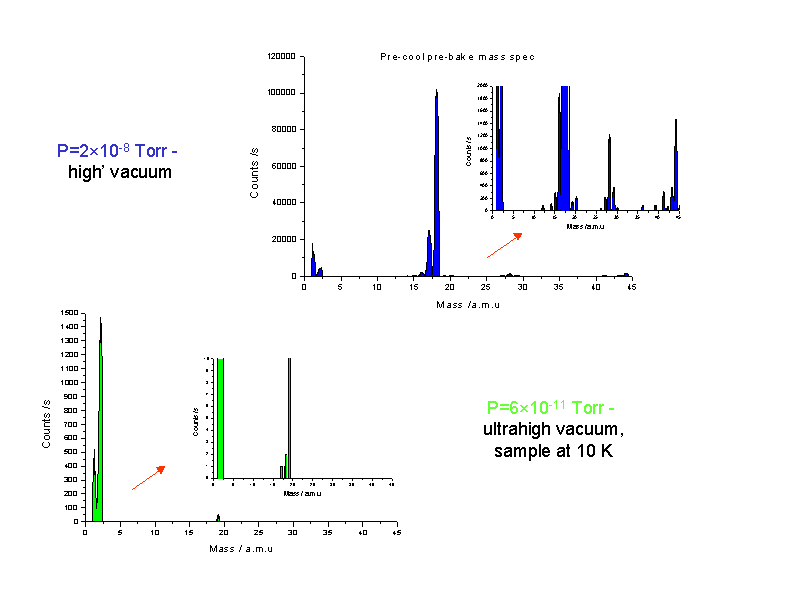|
Quadrupole Mass Spectrometer
A Quadrupole Mass Spectrometer produces a signal proportional to the number of incoming molecules as a function of their mass to charge ratio (m/z). The incoming molecules first enter the ion source where they are ionized by electron bombardment by electrons released from a hot filament. The ions produced (usual having z=1 and z=2) are then focussed by a series of electrostatic plates before entering the quadrupole mass filter. By applying a field consisting of a combination of RF and DC components to the four rods, ions having a particular m/z can be selected i.e. directed out of the end of the mass filter to the detectors). The ions are then detected by one of two methods. Ions can be detected by using a Faraday detector, which collects the ions directly, allowing the ion current to be monitored. Alternatively, for higher sensitivity, a channel electron multiplier (CEM) can be used. This type of detector is a secondary electron multiplier (SEM) in which a large negative potential (~-2000 V) is used to attract the ions into the entrance of the channel. The channel is coated with a material that readily releases secondary electrons upon ion/electron impact. This produces a cascade of electrons down the channel which can be detected, either as the electron current, or as a series of pulses. The components of a QMS are illustrated schematically below.

The Quadrupole Mass Spectrometer (QMS) on our experiments are used to measure:
- constituents of the vacuum
- exact concentrations of molecules dosed into the UHV chamber
- molecules scattering/desorbing off the sample (the QMS is mounted in a liquid N2 cooled shroud, with a line-of-sight tube directed at the sample. This ensures that any molecules desorbed from any surface other than the sample are not detected)
- reaction products originating from the surface
- species desorbed through non-thermal processes
Typical mass spectra of the UHV chamber are shown below, illustrating the cleanliness of the vacuum
and confirming that H2 is the major species present at UHV.

The QMS is equipped with a Secondary Electron Multiplier (SEM) detector which measures the number of electrons reaching the detecting element per second, rather than counting the ions directly. The amplified electron signal is much greater than the total number of ions reaching the quadrupole, and this instrument is consequently very sensitive.
The mass spectrometer was purchased from:

Hiden Analytical
|
|



